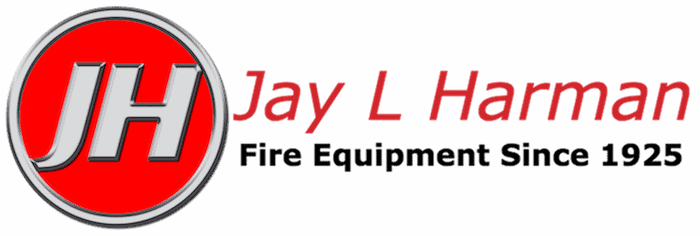Fire suppression systems for commercial kitchens prevent the spread of an already burning fire. Suppression systems use a combination of dry chemicals and wetting agents to suppress cooking equipment fires. Wetting agents are a form of concentrate added to water contained in the system. They improve the fire suppression performance of water by reducing its surface tension. This increases the water’s ability to penetrate and spread. Wetting agents may also provide enhanced cooling, emulsification, and foaming properties that help put out fires. Properly installing and using a fire suppression system helps control damages and loss to equipment in the event of a fire.
The Emulsification Process
An emulsifier is a chemical or mixture of chemicals that creates the formation of an emulsion. An emulsion consists of a small droplet of the hydrocarbon fuel surrounded by water and the emulsifying agent. In effect, the process of emulsification separates the fire’s fuel into water droplets surrounded by the chemicals in the wetting agent. This renders the host fuel less flammable and therefore more benign. For example, Class K fire extinguishers form a crust on the surface of cooking oil fires. This crust-like product is called saponification.
NFPA 96 Standards and Regulations
According to the National Fire Protection Association (NFPA) Code 96, fire extinguishing equipment for the protection of grease removal devices, hood exhaust plenums, exhaust duct systems, and cooking equipment are required to be a part of the full kitchen exhaust system. This includes the need for an automatic fire suppression system as the primary form of protection and then accessible and portable fire extinguishers as a backup.
All portable fire extinguishers must be accompanied by signage that demonstrates how to use them. All automatic fire extinguishing systems must comply with standard UL300: Fire Testing of Fire Extinguishing Systems for Protection of Restaurant Cooking Areas or an equivalent standard. Fire suppression systems should always be installed according to the manufacturer’s instructions and should also comply with the following standards where applicable:
- NFPA 12: Standard on Carbon Dioxide Extinguishing Systems
- NFPA 13: Standard for the Installation of Sprinkler Systems
- NFPA 17: Standard for Dry Chemical Extinguishing Systems
- NFPA 17A: Standard for Wet Chemical Extinguishing Systems
Generally, fire suppression systems detect fires through heat sensors, wiring, or manual detection (depending on the system). Upon activation of the fire suppression system, all sources of fuel or electrical power should automatically shut down. The only exceptions to this are steam supplied or solid fuel cooking operations. Shutoff switches should always have a manual reset. An audible alarm or some type of visual indicator should also be triggered at this time to inform those nearby.
Inspections
Inspectors will test and review your fire suppression systems as part of their full fire safety inspection of your commercial kitchen. It is expected that you have your fire-extinguishing system serviced by properly trained and qualified technicians at least every 6 months to ensure they’re working correctly. As a commercial kitchen or facility manager, you should be inspecting your own systems monthly. The following is a list of items to check when conducting your own inspection:
- The suppression system is in the readied position
- Manual actuators are not obstructed in any way
- All tamper seal indicators are intact, and no seals are broken
- Maintenance tag or certificate is in place
- There is no obvious physical damage
- Pressure gauges (if applicable) are in the operable range
- Nozzle blow caps (if applicable) are in place, intact, and undamaged
This minor inspection can be conducted by any commercial kitchen manager and should be a regular part of your kitchen’s fire safety routines.
It’s About Safety
Keep your commercial kitchen safe from fires by ensuring a properly working fire suppression system. Automatic fire extinguishing systems are proven to reduce the damage that fires cause to cooking equipment.
The Jay L Harman Fire Equipment team understands your firefighting needs and is ready to help
Jay L Harman’s DOT Hydrostatic Testing and Ultrasonic Examination facility and equipment meet all NFPA requirements for the hydrostatic testing and Ultrasonic Evaluation of self-contained breathing apparatus compressed gas cylinders in addition to testing ABC portable fire extinguisher cylinders.
Jay L Harman Fire Equipment Company is your local AMEREX dealer offering the full range of AMEREX Fire Extinguishers, Kitchen Protection systems, Vehicle Systems, Automatic Gas Detection and Industrial Systems.
Jay L Harman is the best and one of the biggest firefighting equipment suppliers and service providers in the region, specializing in fire suppression systems, fire extinguishers, emergency lighting, fire hoses, hydrostatic testing and more. Serving El Paso TX, Las Cruces NM and the surrounding areas, we pride ourselves on buying local and hiring local whenever possible.
Jay L Harman Fire Equipment is your go-to distributor for OVAL low-profile fire extinguishers in West Texas and New Mexico.
Contact Jay L. Harman Fire Equipment in El Paso TX at 915-533-7021 or Las Cruces NM at 575-523-8880.
Since 1925, we have protected businesses throughout the area from the harms and hazards of fires. Every Jay L Harman technician is licensed and regulated by the Texas Department of Insurance State Fire Marshal’s Office. Each of these technicians continually receives the most up-to-date factory training and certifications by our manufacturers. Contact Jay L Harman Fire Equipment today. Let our friendly and knowledgeable staff tell you more about our fire suppression systems and help you find the ideal fire suppression system for your needs. Learn more about our full offering of fire extinguisher training, firefighting services, firefighting products, request a quote, ask a question or request additional information.
